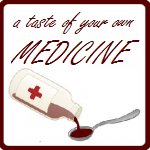 The transition from the second to third year of medical school is like moving from adolescence to adulthood. Your first two years are relatively simple and you have few responsibilities beyond studying. Then, you begin third year and not only do you have to study, but you have to take care of someone else’s health.
The transition from the second to third year of medical school is like moving from adolescence to adulthood. Your first two years are relatively simple and you have few responsibilities beyond studying. Then, you begin third year and not only do you have to study, but you have to take care of someone else’s health.
Most of the transitions only require a minor adjustment to your daily activities. For instance, you’ll finally be able to stretch out your legs. Instead of sitting all day in lecture or at your desk studying, you will be standing for hours on end. I repeat: you will be standing a lot! Wear comfortable shoes. Resign yourself early to the fact that you will end up wearing the clunky clogs that everyone else is wearing even though you swore you would never wear them. Yes, I was one of those people, but I have learned that those unflattering shoes are extremely comfortable (I went with Born shoes but a lot of other people wear Dansko or Crocs).
Your method of learning will change from passive to kinetic. You will not be reading about a patient, but examining them yourself. You will pick up tidbits of information when discussing patient management during rounds. You will learn as you ask your resident questions as you rush to try to keep up with them (they walk very fast!). You learn by example watching the attending’s highly focused physical exam and then learn by doing the same physical examination maneuvers on the patient later, by yourself.
Generic names for drugs are exclusively for your exams. In the real world, generic names are rarely used. A patient doesn’t ask for a refill of sildanefil; he asks for Viagra. You will have to learn what a drug means after seeing the word written over and over. You may be confused by what Bactrim is at first, but learn after looking it up that it’s a drug that you know: TMP/SMX. Don’t worry, you will learn the names easily as you use them over and over again.
It’s the same thing with abbreviations—you’ll see some of the same abbreviations a lot, like UA (urinalysis) and BMP (basic metabolic panel). Certain specialties, like OB/GYN, often sound like they are speaking their own language, but the longer you stay in a rotation, the more familiar you will be with their day-to-day mumbo-jumbo like PPD (post-partum day) and NSVD (normal spontaneous vaginal delivery).
You will be given a pager to maintain communication among your team. At first, you’re curious to see who paged you because you only get sporadic pages. Then, you’ll be sick and tired of getting the same meaningless page three times in a row.
There will be long hours on the wards. Your typical day will change from 7 a.m. to 5 p.m. to 5 a.m. to whenever they send you home. There will also be all-night shifts and you may go weeks until you get your one day off.
Your wardrobe might change, depending how you dressed the first two years. Set aside the jeans, t-shirts, and flip-flops to make room for business attire. Don’t forget to wash your white coat regularly and fill its pockets with valuable materials: pens, stethoscope, paper, notes, small reference books, phone, iPad, clipboard, etc.
The best thing about third year is that you get to work with real patients with real problems! Their physical exam findings actually correlate with what they’re presenting with. No more cue to cough or an exaggerated “ow” like when you examined standardized patients. The patients in the hospital will be your most important resource for learning.
The last thing you need to do during every rotation is to ask yourself a few questions. Are you enjoying the rotation? Do you like the patient population and managing their diseases? Do you get along with the residents and attendings? Could you see yourself doing this every day as a career? If you answer “yes” to some of these questions, then you should consider it as a possible career choice. Ask the residents for advice. Find a mentor. Possibly pursue research in that field or go to an attending’s clinic in your free time. Write down what you liked, didn’t like, and why for each rotation. These notes will come in handy in the months to come when it’s time to finally decide which type of residency you will apply to.
These transitions can be unsettling at first, but they are part of your transition from medical student to medical doctor. This is just the prelude to the beginning of your career. Good luck!
